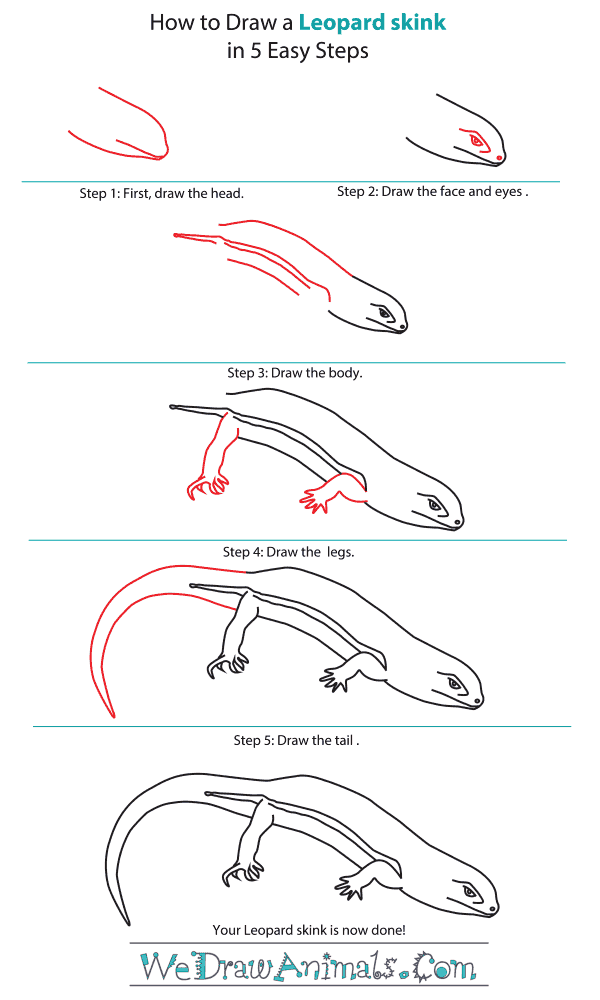In this quick tutorial you'll learn how to draw a Leopard Skink in 5 easy steps - great for kids and novice artists.
The images above represent how your finished drawing is going to look and the steps involved.
Below are the individual steps - you can click on each one for a High Resolution printable PDF version.
At the bottom you can read some interesting facts about the Leopard Skink.
Make sure you also check out any of the hundreds of drawing tutorials grouped by category.
How to Draw a Leopard Skink - Step-by-Step Tutorial
Step 1: Let’s get started drawing the Leopard skink by drawing the head. Make sure to add a point for the nose and a straight line for the mouth.
Step 2: The next step is to draw the eyes and the nose. The eye should be shaped like a sideways “D” with a dot for the eye. Draw around the eye so it looks it has a forehead. Add a small circle for the nose.
Step 3: We are going to draw the body now. There should be space left blank for the tail and the legs. They will come later. Add a stripe in the middle of the body.
Step 4: Next, we are going to add the legs. The legs should have joints like your elbow and don’t forget to add the toes. The toes on the back legs should be larger than the toes on the front leg.
Step 5: Last step is drawing the tail. The tail should go around the stripe on the body and curve around.
Interesting Facts about the Leopard Skink
Leopard skinks are distributed across Australia. The habitat of leopard skink depends primarily on spinifex grass. It is copper brown in color and has white round spots on them. They are very flexible in terms of their living conditions. They are active during the day and night, which allows them to endure cold night temperatures and reward themselves with abundant termites as food. Hunting for food at nighttime also saves them from predator attacks. They are 18-22cm long and they feed on water rich insectivores.
Did you know?
- To flee away from predator, leopard skinks quickly lose their tail, which grows back again after sometime.
- Their method of reproduction involves laying eggs, which makes them oviparous.
- Leopard skink has a wide variety compared to other species under the genus, Ctenotus.
- Triodia mitchelli is the primary spinifex specie that provides habitat for LEopard skink and it grows on red soil.
- They are listed as endangered species.
- In Australia, the genus, Ctenotus, is the largest cluster of lizards found.
Lesson plan note: Make an outline of a lizard and let children fill in with colors.3






